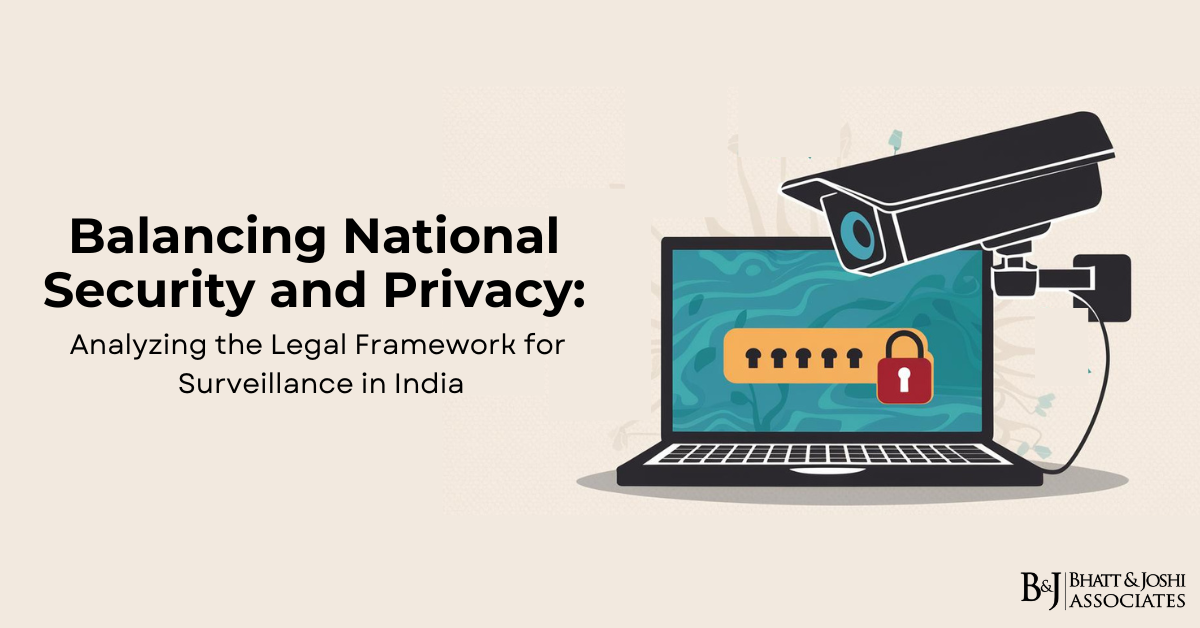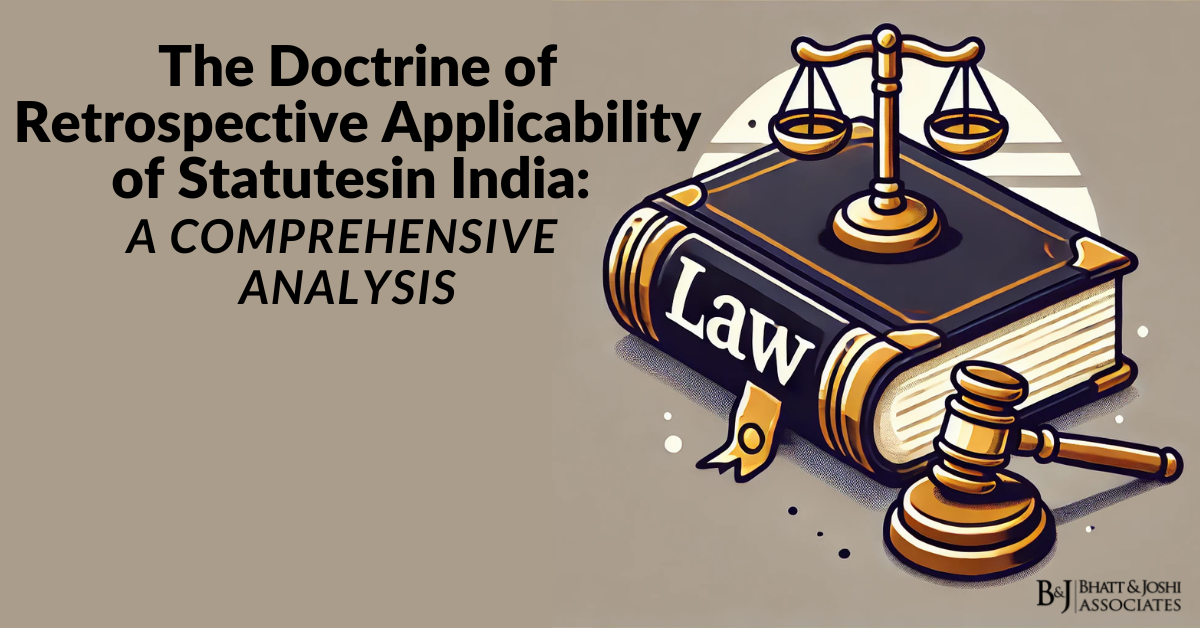
Introduction
In the digital age, balancing national security and privacy has become a contentious and complex issue. Governments around the world, including India, have increasingly relied on surveillance as a tool for maintaining national security and public order. However, this reliance has raised concerns about the potential infringement on civil liberties, particularly the right to privacy. This article critically examines the legal framework for surveillance in India, exploring the mechanisms in place to balance national security interests with the protection of individual privacy rights.
Background on Surveillance and Privacy Concerns
Surveillance, particularly state surveillance, involves monitoring individuals or groups to gather information for security and law enforcement purposes. The advancement of technology has significantly expanded the capabilities of surveillance, enabling mass data collection and analysis. This includes electronic surveillance, such as wiretapping and internet monitoring, which can access vast amounts of personal information. While surveillance is often justified as a necessary measure for preventing crime and terrorism, it raises important questions about the extent to which it encroaches on individual privacy and freedom.
In India, the debate over surveillance and privacy has intensified, especially in light of revelations about global surveillance programs and domestic initiatives like Aadhaar, India’s biometric identification system. The Supreme Court of India’s landmark judgment in Justice K.S. Puttaswamy (Retd.) v. Union of India (2017) affirmed the right to privacy as a fundamental right under the Indian Constitution. This ruling has significant implications for the legal framework governing surveillance, necessitating a careful examination of existing laws and practices to ensure they align with constitutional protections.
The Legal Framework for Surveillance in India
India’s legal framework for surveillance comprises various statutes and regulations that authorize state agencies to conduct surveillance for national security and law enforcement purposes. Key components of this framework include:
- The Indian Telegraph Act, 1885: This colonial-era legislation provides the primary legal basis for the interception of communications in India. Section 5(2) of the Act allows the government to intercept communications on the occurrence of a public emergency or in the interest of public safety, if it is satisfied that it is necessary in the interests of the sovereignty and integrity of India, the security of the state, friendly relations with foreign states, public order, or for preventing incitement to the commission of an offense. The Act requires that interception orders be issued by a competent authority, typically at the level of the Union or State Home Secretary.
- The Information Technology Act, 2000: The IT Act, particularly through its 2008 amendments, provides a framework for electronic surveillance, including the interception, monitoring, and decryption of digital communications. Section 69 of the IT Act empowers the central or state government to direct any agency to intercept, monitor, or decrypt information through any computer resource if it is necessary in the interests of national security, public order, or preventing incitement to an offense. The Act also includes provisions for penalties and imprisonment for unauthorized access to data and cybercrimes.
- The Unlawful Activities (Prevention) Act, 1967 (UAPA): UAPA is an anti-terrorism law that provides the government with broad powers to curb activities deemed unlawful, including terrorism-related activities. The Act allows for the interception of communications to gather intelligence on suspected terrorist activities and organizations. However, the broad scope of UAPA and its provisions for detention without trial have raised concerns about potential misuse and infringement on civil liberties.
- The Indian Penal Code (IPC), 1860 and the Code of Criminal Procedure (CrPC), 1973: The IPC and CrPC provide additional legal provisions related to surveillance and law enforcement. For instance, Section 91 of the CrPC allows a court or police officer to order the production of any document or electronic record necessary for investigation. While these laws do not explicitly focus on surveillance, they provide a legal basis for the collection of information and evidence, including digital data.
Judicial Oversight and Safeguards
The legal framework for surveillance in India includes certain safeguards aimed at preventing abuse and ensuring accountability. Judicial oversight is one such safeguard, intended to ensure that surveillance measures are authorized and conducted within the bounds of the law. For instance, the Indian Telegraph Act requires that interception orders be reviewed by a Review Committee, comprising senior government officials, to assess their legality and necessity. The IT Act also mandates similar oversight mechanisms for electronic surveillance.
However, the effectiveness of these safeguards has been questioned. Critics argue that the oversight mechanisms are largely internal, lacking transparency and independent review. The Review Committees are composed of government officials, raising concerns about potential bias and conflicts of interest. Moreover, the absence of judicial approval for interception orders means that decisions to authorize surveillance are made without independent judicial scrutiny. This has led to calls for stronger judicial oversight and the establishment of an independent authority to oversee surveillance activities.
The Right to Privacy and Surveillance in India
The recognition of the right to privacy as a fundamental right under the Indian Constitution has significant implications for surveillance practices. The Supreme Court’s ruling in the Puttaswamy case emphasized that any infringement on privacy must meet the tests of legality, necessity, and proportionality. This means that surveillance measures must be backed by a valid law, serve a legitimate aim, and be the least intrusive means available.
The judgment also highlighted the need for procedural safeguards to protect against arbitrary interference with privacy. These safeguards include the requirement for clear and precise legal provisions, independent oversight, and the availability of remedies for individuals affected by unlawful surveillance. The ruling has prompted a re-examination of India’s surveillance laws, with calls for reforms to ensure they comply with constitutional standards and international human rights norms.
The Balance Between National Security and Privacy
Balancing national security and privacy is a complex and challenging task. National security is a legitimate and compelling state interest, and surveillance can be an essential tool for preventing crime, terrorism, and other threats. However, excessive or unchecked surveillance can lead to a “chilling effect,” where individuals refrain from exercising their rights to free speech, expression, and association out of fear of being monitored.
To strike a balance, surveillance laws must incorporate robust safeguards to protect individual rights while allowing the state to fulfill its security responsibilities. These safeguards include:
- Clear Legal Standards: Surveillance laws should clearly define the conditions under which surveillance can be authorized, the scope of surveillance activities, and the duration for which surveillance can be conducted. This clarity is essential for preventing arbitrary and overbroad surveillance.
- Independent Oversight: Independent oversight mechanisms, including judicial review, are crucial for ensuring that surveillance measures are lawful and proportionate. An independent authority, such as a privacy commissioner or an ombudsman, can provide impartial oversight and review of surveillance activities.
- Transparency and Accountability: Transparency in surveillance practices, including the publication of transparency reports and the disclosure of interception statistics, can enhance accountability and public trust. While operational security considerations may limit full disclosure, providing aggregate data and oversight findings can help ensure that surveillance powers are not abused.
- Remedies and Redress: Individuals affected by unlawful surveillance should have access to remedies, including the right to challenge surveillance measures and seek compensation. Legal frameworks should provide clear procedures for addressing grievances and ensuring accountability for violations of privacy rights.
Technological Advancements and Emerging Challenges
The rapid advancement of technology presents new challenges for surveillance and privacy. Technologies such as facial recognition, artificial intelligence, and big data analytics have expanded the capabilities of surveillance, enabling more precise and pervasive monitoring. While these technologies can enhance security, they also raise significant privacy concerns, particularly regarding mass surveillance and the potential for discriminatory profiling.
In India, the deployment of facial recognition technology (FRT) by law enforcement agencies has sparked debate over its implications for privacy and civil liberties. FRT systems can identify and track individuals in public spaces, raising concerns about the potential for surveillance overreach and the lack of adequate safeguards. The absence of comprehensive data protection laws and regulations governing the use of such technologies exacerbates these concerns.
International Perspectives and Comparisons
India’s approach to surveillance and privacy can be compared with practices in other countries, highlighting different legal and regulatory frameworks. In the United States, for example, the Foreign Intelligence Surveillance Act (FISA) provides a legal framework for electronic surveillance for national security purposes. The FISA Court, a specialized judicial body, oversees requests for surveillance warrants, providing a measure of judicial oversight. However, concerns about mass surveillance and the collection of metadata have led to calls for greater transparency and reform.
In the European Union, the General Data Protection Regulation (GDPR) and the European Convention on Human Rights (ECHR) provide strong protections for privacy and data protection. The GDPR imposes strict conditions on the processing of personal data, including requirements for transparency, consent, and accountability. The European Court of Human Rights has also set important precedents on the limits of state surveillance, emphasizing the need for safeguards to protect privacy and freedom of expression.
These international examples underscore the importance of legal frameworks for balancing national security and privacy. They highlight the role of judicial oversight, transparency, and accountability in ensuring that surveillance measures are justified, proportionate, and subject to independent review.
Recommendations for Strengthening the Legal Framework for Surveillance
To enhance the balance between national security and privacy in India, several recommendations can be made:
Strengthening judicial oversight is crucial for ensuring that surveillance measures are authorized and conducted in accordance with the law. This could involve requiring prior judicial approval for interception orders, as well as establishing an independent oversight body with the authority to review and audit surveillance activities. Such measures would help ensure that surveillance is used only when necessary and proportionate and that there is accountability for any abuses.
Enhancing transparency and public awareness is essential for building trust in surveillance practices. The government should regularly publish transparency reports detailing the use of surveillance powers, including the number of interception orders issued, the types of crimes being investigated, and the outcomes of surveillance operations. Additionally, public awareness campaigns can educate citizens about their rights and the safeguards in place to protect their privacy.
Updating legal frameworks to address emerging technologies is necessary to keep pace with advancements in surveillance capabilities. This includes establishing clear regulations for the use of technologies such as facial recognition, drones, and artificial intelligence, with specific provisions for protecting privacy and preventing discrimination. The development of a comprehensive data protection law, in line with international standards, would provide a robust framework for safeguarding personal data and ensuring that surveillance practices are subject to stringent data protection requirements.
Conclusion: Maintaining the Balance Between National Security and Privacy
The legal framework for surveillance in India reflects the complex interplay of balancing national security and privacy. While surveillance is an essential tool for ensuring public safety and preventing crime, it must be balanced with the protection of individual rights. The recognition of privacy as a fundamental right by the Supreme Court of India has underscored the need for surveillance laws that are clear, proportionate, and subject to independent oversight.
As technology continues to evolve, so too must the legal and regulatory frameworks that govern surveillance. By strengthening oversight, enhancing transparency, and updating legal provisions to address new challenges, India can strike a balance that respects both national security imperatives and the fundamental rights of its citizens. This balance is essential for maintaining public trust, protecting civil liberties, and ensuring that the tools of surveillance are used responsibly and ethically.













